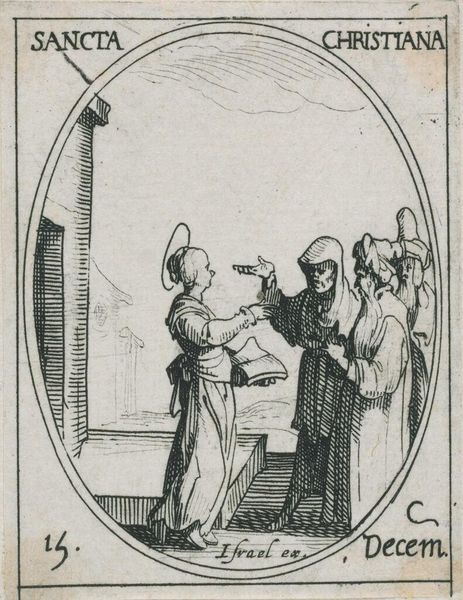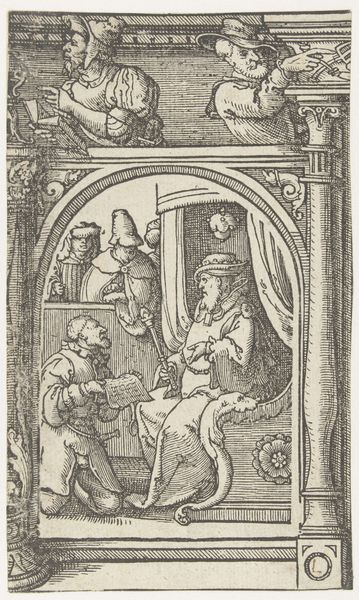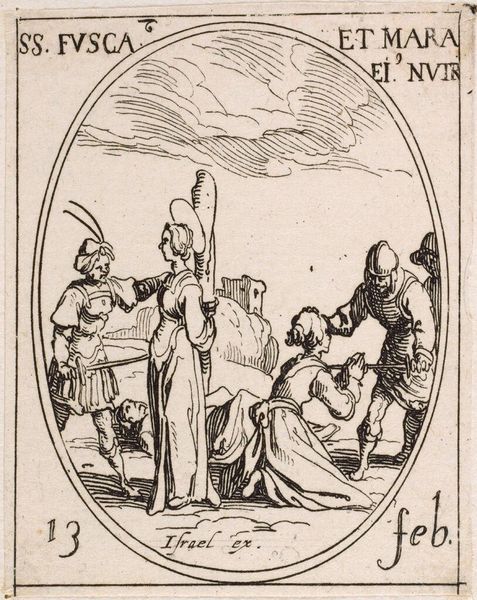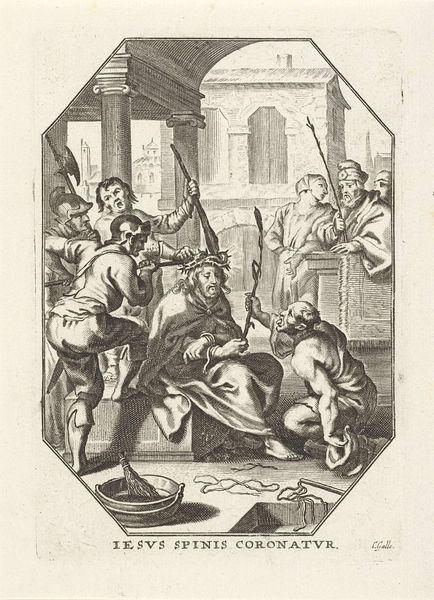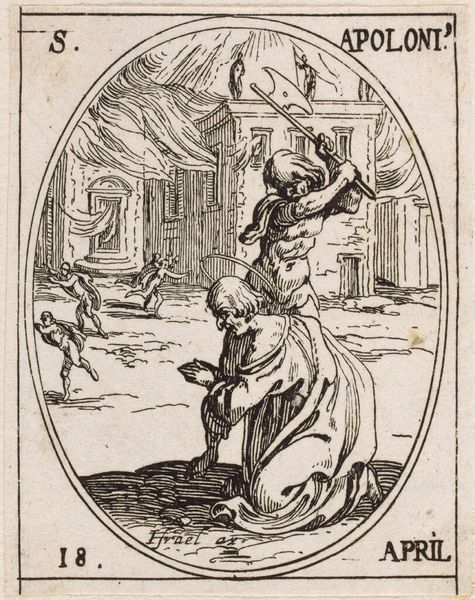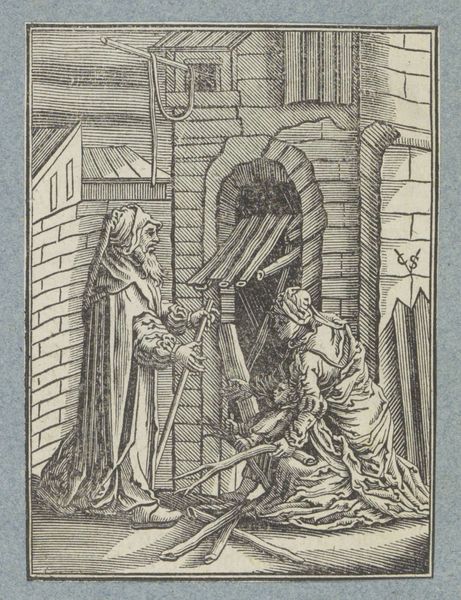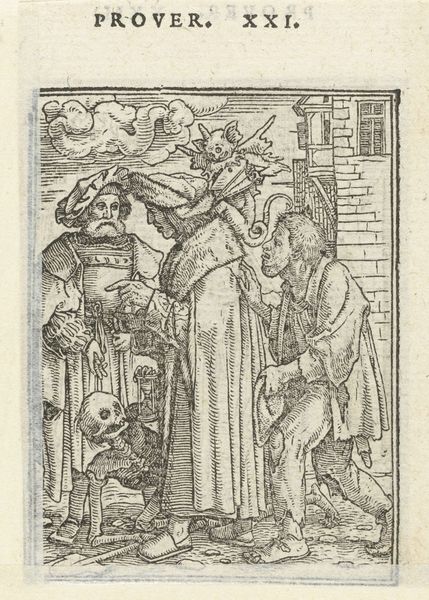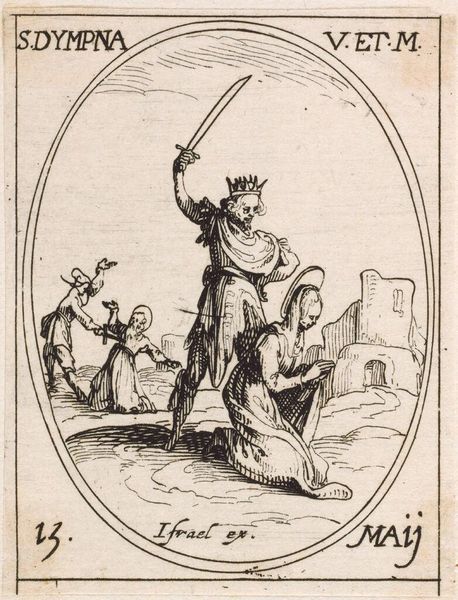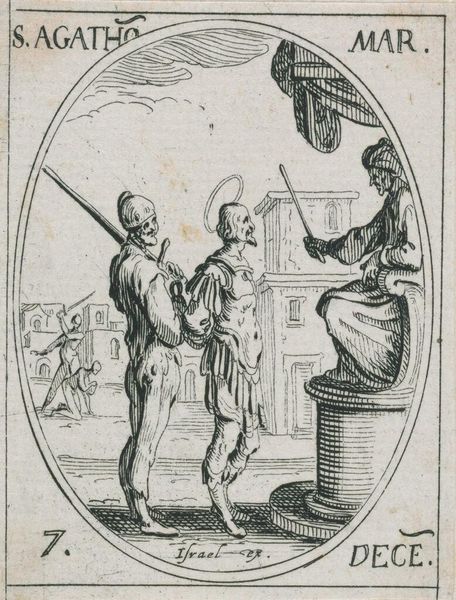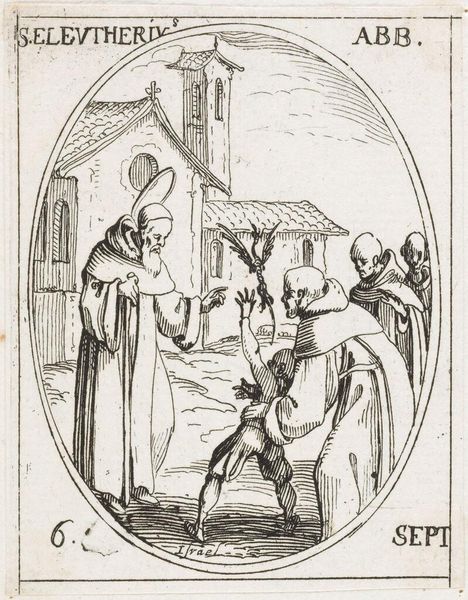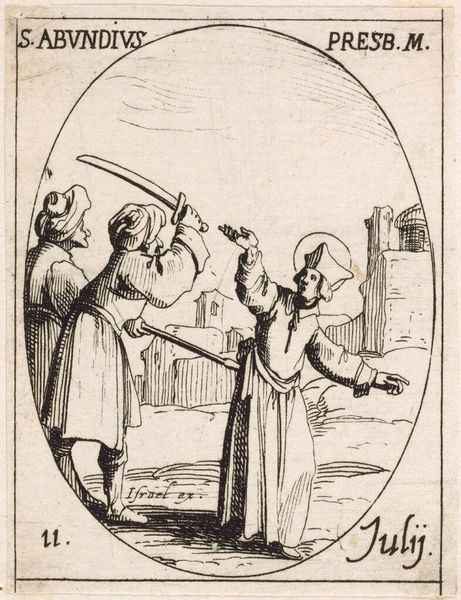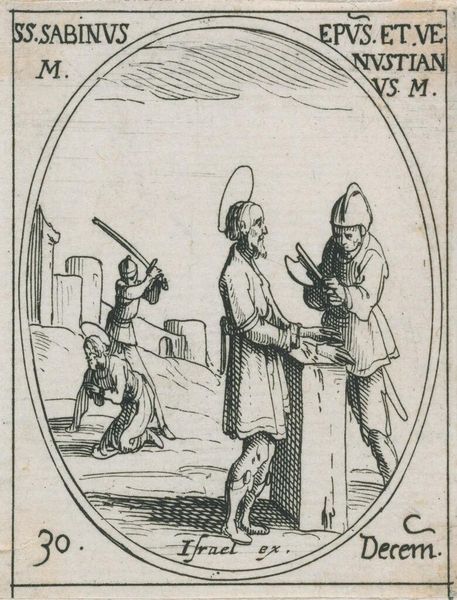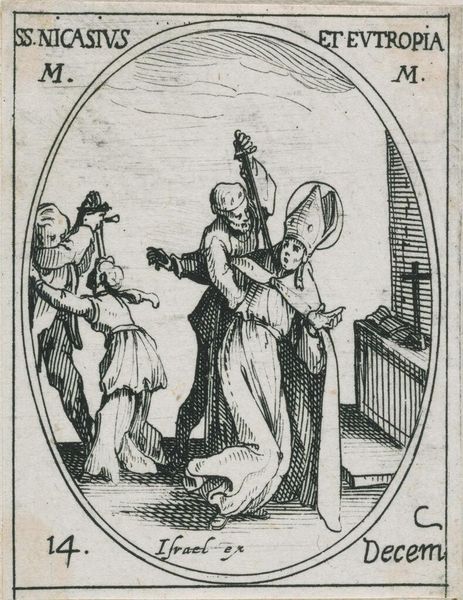
Dimensions: 7.6 x 4.9 cm (3 x 1 15/16 in.)
Copyright: CC0 1.0
Editor: This is Jacques Callot's "Saint Eusebius," a small etching. It looks like a chaotic scene, everyone pointing and shouting. What symbols do you see at play here? Curator: Notice the halo above Eusebius, immediately marking him as holy despite the violence enacted upon him. The figures pointing, the falling miter, represent not just physical assault, but a rejection of religious authority. What emotional impact does the artist achieve by framing this with architecture? Editor: I see! The church seems to loom over the scene, like a silent witness to the saint’s suffering. Curator: Precisely. Callot uses architectural elements to represent a system under attack, while Eusebius, through his halo, embodies unwavering faith despite that attack. How does this affect your understanding? Editor: It makes me think about how symbols are used to convey messages about power and belief. Curator: Indeed. We find that the cultural memory of religious persecution is encoded in this image, urging the viewer to remember and contemplate faith's endurance.
Comments
No comments
Be the first to comment and join the conversation on the ultimate creative platform.

